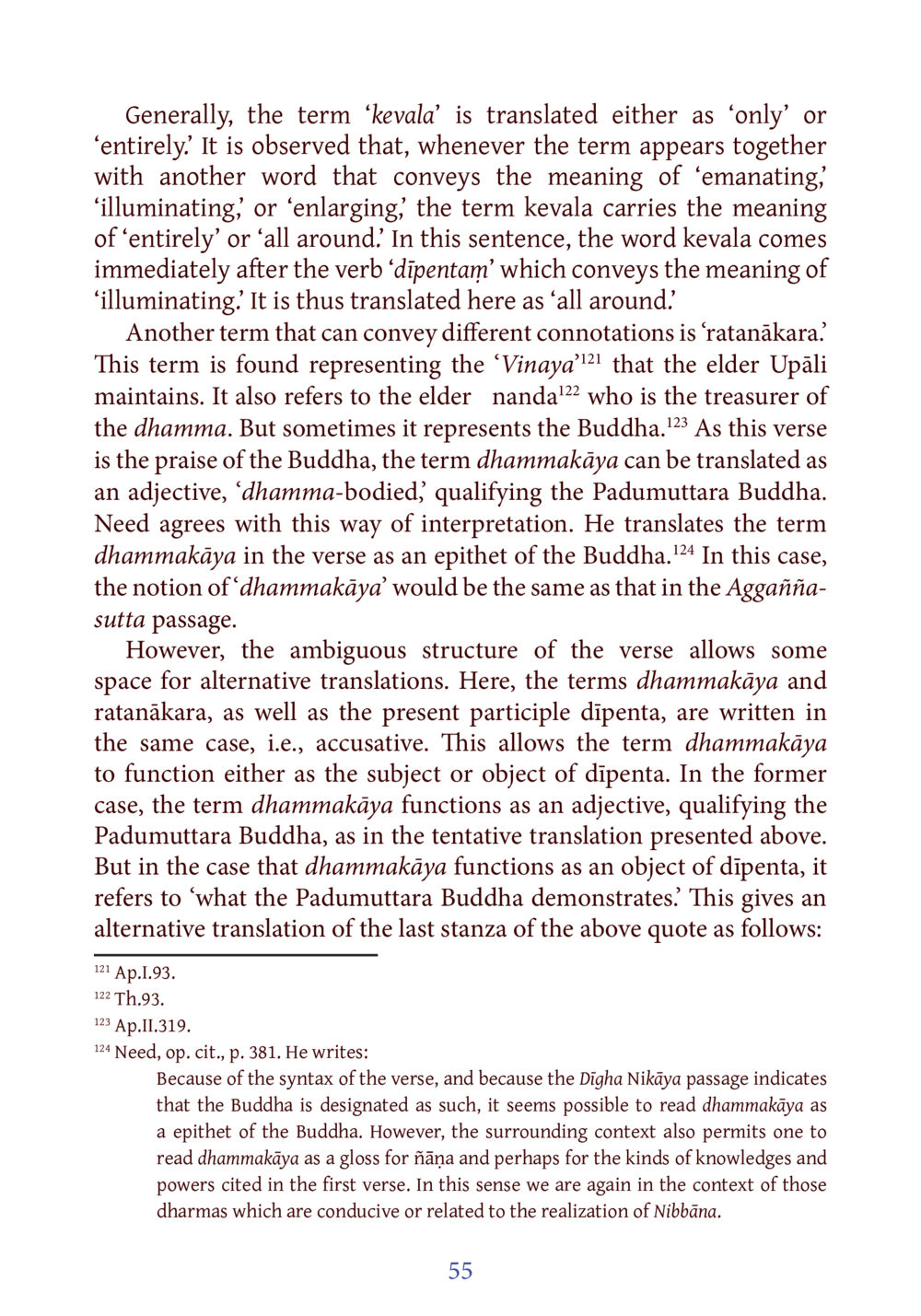Understanding the Terms Kevala and Dhammakāya in Buddhist Texts : หน้า 76/141
DIRI Journal : หน้า 76/141 An analysis of the meanings of 'kevala' and 'dhammakāya' in Buddhist scriptures, exploring their interpretations and implications.
2 ครั้ง

สรุปเนื้อหา
This text explores the interpretation of key Buddhist terms such as 'kevala', which denotes 'only' or 'entirely', particularly in contexts associated with illumination. The term 'dhammakāya', often linked to the qualities of the Buddha, serves as an epithet highlighting the nature of being 'dhamma-bodied'. The syntax of these verses allows for various translations and interpretations, with 'dhammakāya' functioning as both subject and object in specific contexts, raising discussions around the teachings of the Buddha and the path to Nibbāna. The usage of these terms reflects the complexity of Buddhist teachings and the richness of the scriptures, revealing layers of meaning that invite deeper reflection.
หัวข้อประเด็น
-Kevala Interpretation
-Dhammakāya Significance
-Buddhist Etymology
-Exploration of Terms in Digha Nikāya
-Alternative Translations in Buddhist Contexts
ข้อความต้นฉบับในหน้า
หน้าหนังสือทั้งหมด













































































































































